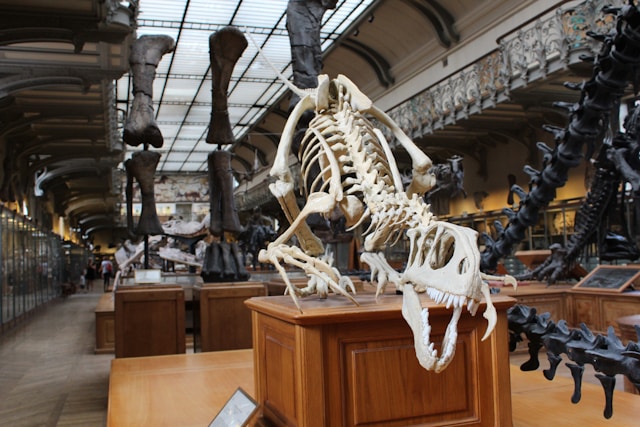New scans reveal a second large asteroid impact coinciding with the extinction event that wiped out dinosaurs 66 million years ago
A recent study has revealed that the cataclysmic event which ended the age of the dinosaurs was not an isolated incident. Detailed scans of an underwater crater off the coast of Guinea in West Africa suggest that a second large asteroid impacted Earth around the same time as the infamous asteroid that led to the mass extinction event 66 million years ago.
Researchers utilised advanced 3D seismic imaging techniques to analyse the Nadir crater, which measures over five miles across. They believe the asteroid responsible for this crater was approximately a quarter of a mile wide and struck at speeds nearing 45,000 mph. While smaller than the asteroid linked to the extinction, this impact was substantial enough to leave a significant mark on our planet.
Embed from Getty ImagesDr Uisdean Nicholson, a marine geologist at Heriot-Watt University in Edinburgh, initially discovered the Nadir crater in 2022, although details surrounding the impact remained elusive until now. “The new images paint a picture of the catastrophic event,” he explained, emphasizing the clarity and detail of the scans. With about 20 confirmed marine craters globally, the data captured here is unprecedented.
The violent collision likely caused intense seismic activity, leading to the liquefaction of sediments beneath the ocean floor and resulting in the formation of faults below the seabed. The researchers found evidence of landslides and damage extending for thousands of square miles beyond the crater’s rim. In addition, the impact would have triggered a massive tsunami over 800 metres high, potentially sweeping across the Atlantic Ocean.
While researchers have not determined the precise timing of the asteroid’s impact, its age suggests it could be part of a series of impacts occurring at the end of the Cretaceous period. The asteroid that caused the dinosaurs’ extinction, which struck the Yucatán Peninsula in Mexico, was much larger, creating a crater 100 miles wide in what is now known as Chicxulub.
Dr Nicholson noted the significance of these findings, drawing parallels to historical events. “The closest humans have come to witnessing something like this is the 1908 Tunguska event, when a 50-metre asteroid exploded in the atmosphere above Siberia,” he remarked.
The newly obtained 3D seismic data from the Nadir crater provides a valuable opportunity for scientists to test existing hypotheses about impact craters and to develop new models regarding crater formation in marine environments. This research not only deepens our understanding of Earth’s history but also highlights the dynamic and often catastrophic nature of our planet’s geological processes.
